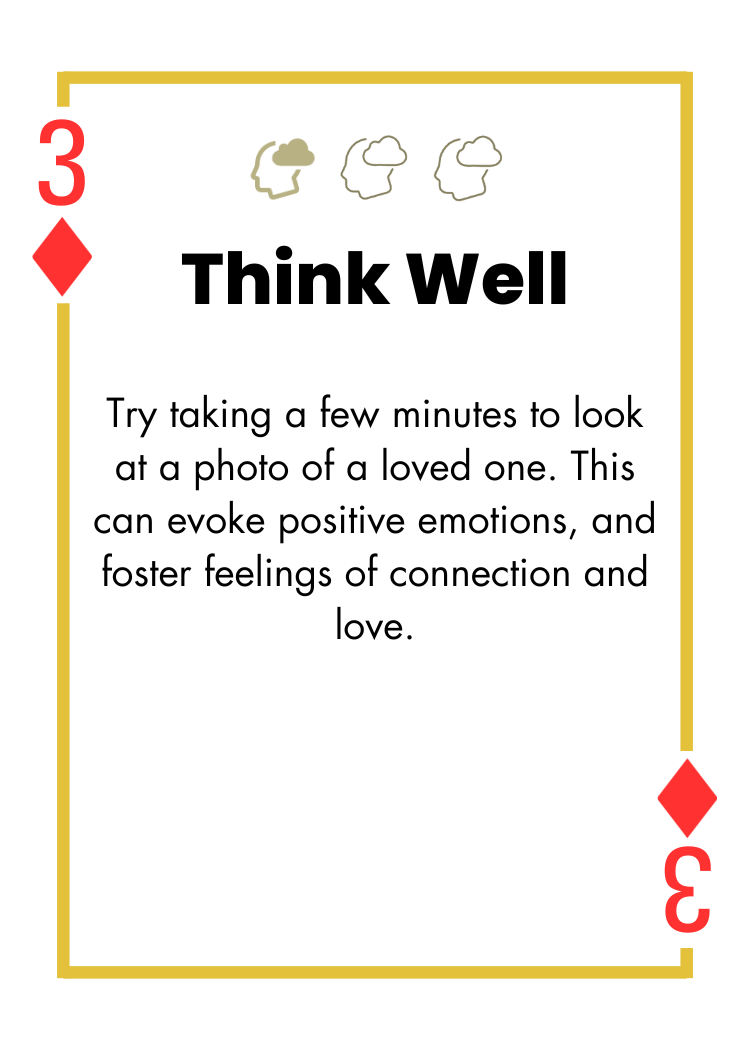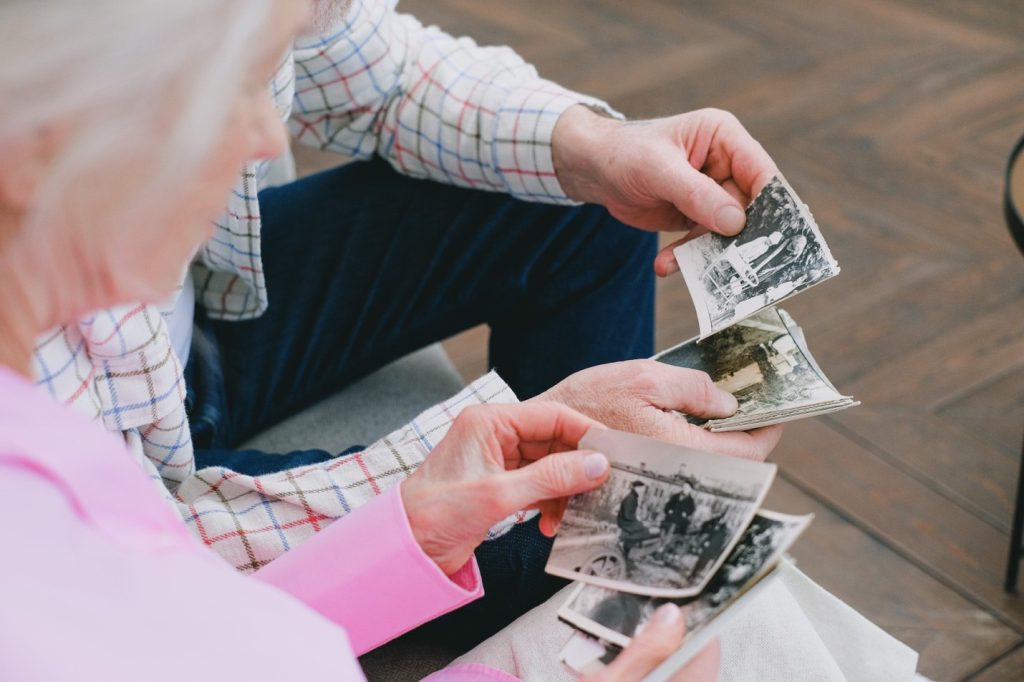3 of Diamonds - Photograph

Looking at a photograph can evoke positive emotions, good memories and a sense of identity for a person. This is especially true when it’s a snapshot of a loved one or old family member a person has lost.
Family albums and photographs are important material in understanding an individual’s life and the emotional climate of one’s family life (Halkola 2009).

This Is a Fun One!
Find an old or new photo of a loved one and look at it for five minutes. Doing so triggers the feel-good neurotransmitters/endorphins in the brain and that makes you feel fantastic. Try this every day for a week and see how it changes your mood. It’s these easy 1% tips that can change your day, every day.
Book in with one of our expert mental wellness coaches and let us support you on your journey to a happier and healthier future.
Phototherapy is viewing photos as a means of personal healing. The basic idea of phototherapy is the range of photos viewed are chosen ones of great interest to the individual in therapy and next the content of each photo are discussed and studied from multiple aspects. Any photographs passing this screening are then accompanied by other photos and families of photos. Meanings of the photos to the person are screened, captured, clarified and enriched. The essential objective is working with photos is not restricted to verbal descriptions and with photos associative time-travel led by feelings is possible (Halkola 2009).
The aim of therapy is to find themes meaningful to an individual and to discover how it may be possible to influence present happenings and to cope with major life events. A main goal is to become more consciously aware and able to engage more wholly in self-reflection. Thus, biographical photographs are a logical and equally creative source as a supplement to verbal reminiscing (Halkola 2009).
Phototherapy techniques employ the clients’ own personal snapshots and family photos since these evoke feelings, memories, and thoughts as catalysts for therapeutic communication and healing. The photos act as footprints of their lives because personal snapshots demonstrate where individuals have come from both emotionally and spatially and may predict where they might be heading either consciously or unconsciously within their life (Weiser 2004).
Small changes CAN make a big difference – that’s what The 1% Club is all about.
Halkola, U. (2009). A photograph as a therapeutic experience. European Journal of Psychotherapy and Counselling, 11(1), 21-33.
Weiser, J. (2004). Phototherapy techniques in counselling and therapy–using ordinary snapshots and photo-interactions to help clients heal their lives. Canadian art therapy association journal, 17(2), 23-53.


 See Other Cards!
See Other Cards!